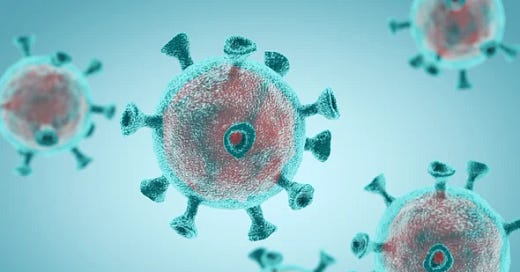Shortly after the Covid-19 pandemic shook the world, people began reading about pandemics with many reading lists suggesting Albert Camus’s seminal text The Plague or Daniel Defoe’s historical classic A Journal of the Plague Year. The renewed energy in these texts offered some insight into literature’s reconstruction of the past, or in some cases, the plague was an allegory for what we were living through. During the initial plague outbreak in Oran, the Algerian town of Oran, one character in The Plague notes: “It’s impossible it should be the plague, everyone knows it has vanished from the West.” Shrouded with doubt, his scepticism sprung from the anachronism of plague and war’s resurgence. The plague was a metaphor for the Nazi occupation and a literal gesture of Camus’s own struggle with tuberculosis. Camus presents a world where his protagonists—Rambert, Rieux, and Tarrou—try to resist complacency, and instead, they try to stifle the virus.
In the era of Covid-19 and monkeypox, we are coming to terms with how—in fiction and reality—there is, as Steven Thrasher notes in his new book, a viral underclass. Apart from acknowledging how we continue to repeat the injustices of the past, we might be inclined to consider how activists today are shifting the tide of public health discourse. In my recent article “Of International Concern,” for the London Review of Books, I wrote:
It is not homophobic however to argue that MSM should be prioritised for testing and vaccination. In New York City and San Francisco, community leaders and LGBTQ+ advocates have protested against the sluggish response to monkeypox by health departments. As with Covid-19 and HIV, marginalised groups have argued that the official response highlights who is neglected and which diseases get money spent on them.
That said, public institutions need to do better in shaping not only providing people with free testing and vaccination but there needs to be less shame around these diseases in question. As a historian of science, I believe that pandemic novels can offer parallels with the moment we live in by assuaging the ongoing anxieties about the present. Even in panic, these novels offer twists and turns, while providing vivid imagery on the page.

Earlier this year, The New York Times published an article highlighting the problem with the pandemic plot, arguing that “The relatively glacial production cycle for fiction is also creating obstacles for writers who, like the rest of us, can’t predict what life will look like in the coming years, and worry that pandemic references might make their novels feel dated.” As Alexander Alter rightly notes, even if plagues have caused people to be prickled with fear, living in the time of plague has not always produced the most compelling literature. Nevertheless, I argue that some seminal novels are worth revisiting, mostly because they provide room for ingenuity, strangeness and insight into another world.
This short reading list explores how novels — past and present — have not only tackled epidemics but also provided acute and thought-provoking insight into humanity's tenacity. Given these texts' range in time, scope, and region, I believe the novels offer a new crop of texts to flourish and overcome the corrosive effects of pandemic disillusionment and despair. In my humble opinion, summer is a perfect time to explore new and (not-so-new books), I invite you to consider exploring some of these texts.
The Last Man by Mary Shelley (1826)
Pale Horse, Pale Rider by Katherine Anne Porter (1939)
Ammonite by Nicola Griffith (1992)
The Calcutta Chromosome by Amitav Ghosh (1995)
Blindness by José Saramago (1995)
Parable of a Sower by Octavia Butler (1993)
Salvation City by Sigrid Nunez (2010)
Zone One by Colson Whitehead (2011)
Station Eleven by Emily St. John Mandel (2014)
Severance by Ling Ma (2018)
Next week, I’ll start providing a short analysis of these texts and what we can learn from them. If you have some thoughts about these texts or others, I would love to hear from you.
Happy Reading,



